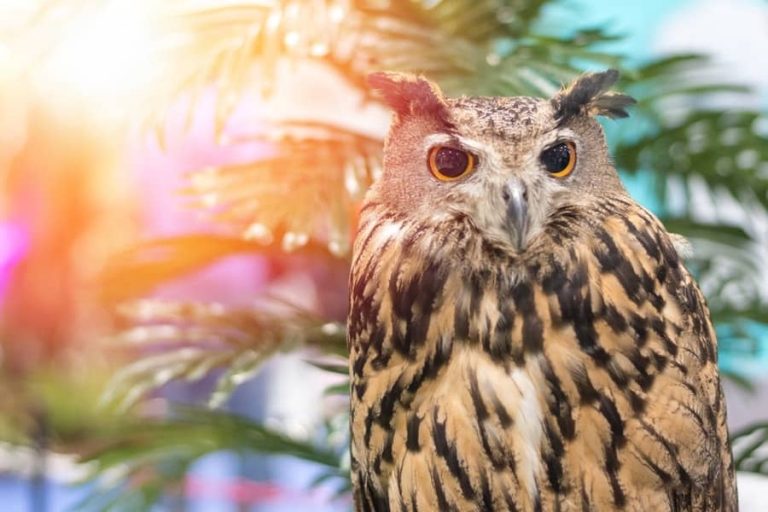Will Snakes Cross A Rope? (Yes!)
The myth surrounding snakes refusing to cross a rope is an intriguing one. It all stemmed from cowboys laying their lassoos around them while they slept, claiming that this rope barrier deterred snakes from crossing and biting you in your sleep.
Explanations for this claim range from the rope being prickly and uncomfortable for the snake to cross, to the snakes being tricked into thinking the rope was another much larger snake, and even that horsehair ropes deter snakes which are frightened of horses!
But is there any truth behind the story? Will snakes cross ropes? And how do they feel about braided ropes, or horse hair ropes? The short answer is yes, snakes will cross ropes. There is nothing to stop them from doing it long as they have a good enough reason to do so.
Today, we’ll investigate this myth including its deeply embedded origins, its offshoots (including braided rope and horse hair rope), the reasons why snakes can and will cross a rope, and a snake’s sensory system. We’ll also look at a couple of methods which will actually deter snakes.
Will Snakes Cross A Rope?
The Origins Of The Myth
According to cowboy legends, placing a rope or lassoo around your bed during the night will stop snakes from getting to you. Offshoots of the myth require horsehair ropes, or braided ropes to enhance the rough texture of the rope and thereby discourage snakes from crossing. Other tales specify rattlesnakes as the ones who are reluctant to cross.
Regarding ropes woven from horsehair, one theory is that snakes associate the smell of the rope with a horse and are therefore frightened away by it. People thought that snakes might be scared of horses because they are much larger animals and are able to crush a snake underfoot.
Some believed, and still do believe, that snakes might see a rope as another snake. A lassoo would represent a much longer and more threatening adversary, so it’s easy to see why a snake might steer clear.
Snakes were a great hazard to cowboys, and it has been long known that snakes are attracted to heat which could include body heat or the heat of a campfire. A deeply embedded fear of snakes throughout human history is probably responsible for the formation of this myth – anything to maintain hope that you won’t get bitten during your sleep!
A lack of anti-venom and close-by, organised hospitals made snakes a real danger – they still are in some parts of the world. So people needed to learn to live with them. Setting down a rope eased your worries if you believed a snake couldn’t cross it, and lead to a more peaceful night’s sleep.
Is There Any Truth Behind The Myth?
No, there is no truth behind the myth that snakes will not cross a rope. In short, snakes are used to crossing rough and uncomfortable terrain, for example sand, grit, and cactus spines are their regular under-belly textural experience! Therefore a rope, however rough, would not represent a problem for their bellies.
Snakes would also not avoid a rope woven from horsehair because it smells like a horse. They are very unlikely to connect a smelly horse rope to a potential trampling incident! While a spooked horse which has been surprised by a snake may indeed attempt to trample a snake, a snake will not avoid a rope which is not making any vibrations of horse-like movements.
As for snakes seeing the rope as another snake, this is also untrue. Other animals may see snake-shaped objects and avoid them like the plague because snakes are a real danger to them either as predators or through their hazardous bites. However, snakes have poor vision and will not detect prey or other snakes by sight. They detect their surroundings and other animals mainly through hearing, smell and taste, and vibrations. Some even have the ability to sense heat coming from other animals. All in all, a snake would treat a rope like other inanimate objects and ignore it.
Snakes are also not interested in people, they are more likely to keep clear of them. These reptiles do not see people as prey but as predators themselves – large animals which have the potential to kill snakes. There is no way a snake would intentionally slither up to you in the middle of the night and cuddle up in your bedroll!
The only semblence of truth lying behind this myth is that a snake will only cross a rope if it has to, if there is a good enough reason. If there is simply a human lying on the other side and no sign of potential prey items, the incentive to cross the rope is not strong enough.
For evidence, see this video of a snake crossing a rope!
Snake Sensory System
We mentioned a little bit about the way in which a snake detects prey and animals around it above, but we’ll go into a little more detail here to further debunk the rope myth.
Eyesight
A snake’s eyesight is poor and relatively undeveloped compared to other animals which hunt by sight, such as birds and big cats. Slithering along the ground limits your vision of your surroundings, so evolving excellent distance vision was not necessary for snakes. The only exception here is arboreal snakes which require better vision to detect predators and prey from the treetops.
Hearing
Snakes have highly developed ears. Their internal ears receive low frequency, airborne vibrations, helping them to pinpoint moving objects acurately. They can also hear through their jaw! Vibrations borne through the ground are received by a snake’s quadrate bone which connects the skull to the lower jaw. These are transmitted through the columella (middle ear bone) and onwards to the inner ear. Incredible!
This means a snake will usually hear you long before you see it, lessening the chance of a snake approaching you during your night sleeping under the stars!
Smell & Taste
Famously, snakes use their tongues to taste and smell, receving information through their olfactory system. The tongues are specially adapted to capture scent particles drifting in the air. These are transferred to the vomeronasal organ (also called Jacobson’s organ) which sits on the roof of a snake’s mouth. This makes snakes close to top of the list when it comes to chemosensory techniques!
Like with a snake’s hearing ability, it is likely you will be smelt long before you see a snake. Human smell is not associated with prey so the snake will be unlikely to investigate this. A snake would also be able to smell a rope, especially one made from horse hair. But again, it is not likely to investigate this.
Touch
There are tactile receptiors placed all over a snake’s body, making it incredibly sensitive to changes in their surrounding environment. This results in lightning quick reactions to movement around them, stimulating internal muscular movement and allowing them to either escape from threats or capture prey.
Heat Receptors
Some, but not all, species of snake have an incredible extra sense – the ability to sense the heat of other living things. More specifically, they sense changes in infrared radiation emitted by other animals. This adaptation is most prominent in 2 groups of snakes: boids (pythons and boas) and pit vipers (family Crotalidae).
Species with this ability have rows of heat pits contained within supralabial pits (located on the upper jaw) and/or infralabial pits (located on the lower jaw). Heat pits are sensitive to changes in surrounding ambient temperature which could be created by, for example, a small rodent creeping past.
This is a skill which is particularly valuable to nocturnal predators – species which hunt for prey at night. Nocturnal snakes are perhaps the most likely species you would come across when sleeping out at night. If a snake detected the changes in ambient temperature generated by a sleeping human it would be more likely to scarper in the opposite direction than attempt to go towards it, whether there was a rope in the way or not!
Is There Anything Snakes Won’t Cross?
Snakes are not frightened of inanimate objects. If something is not creating vibrations then a snake is not afraid to cross over it. So is there anything which will deter snakes?
The two most likely things that snakes will not cross is snake repellent and snake fences. These are specifically designed to deter snakes and keep them away from human properties.
Snake Repellent
The best kinds of snake repellents are those which are not harmful to children, pets, or other wild animals. There are a whole range of products on the market including snake repellent granules, powder, and liquids. This is not necessarily a good option if you are sleeping out under the stars cowboy style. It’s not very practical to carry a whole tub of snake repellent out into the wilderness! Some people suggest an ammonia-soaked rag as snakes hate the smell of ammonia. But if you’re looking for a backyard solution then snake repellent may be a good option. (Be warned, some experts say these products do not work effectively. Best to do your research thoroughly!)
Snake Fences
Perhaps this product should be renamed, as it conjures up the image of a fence made of snakes! Snake fences are designed to keep snakes out of peoples’ properties. They are usually made from wire mesh or even hardware cloth. Again, these are useful to keep snakes out of your yard or away from your chickens, but not necessarily when you’re out camping.
Deterring Snakes When Sleeping Under The Stars
Now you know that to keep snakes away from your campsite you can’t rely on rope! There are no sure-fire ways to keep snakes away completely other than trusting they do not want to come near you. But there are a few simple steps you can take to be on the safe side:
- Choose a snake-free area (away from rocky areas, areas with thick bushes and undergrowth, and areas right next to water sources).
- Camp in short grass (snakes avoid these areas)
- Choose a well-lit spot (so you can see if there are any snakes around and avoid them at night)
- Lighting a fire (if local regulations permit. However, avoid using firewood that has been standing around in a stack – it may be home to a snake!)
- Keep your site clean (do not leave trash outside your tent, clean up spilled food, and do not leave food containers lying around)
- Check your campsite thoroughly and regularly (ensure your have no holes in your tent, close all zips tightly, shake out your sleeping bag before sleeping, shake out your boots before wearing!).
Also Read:







